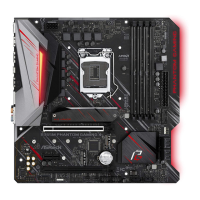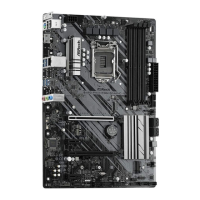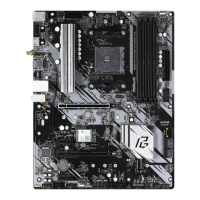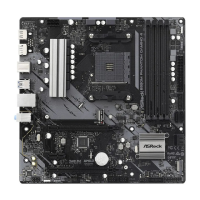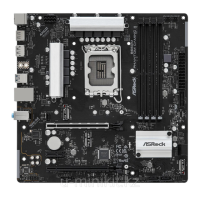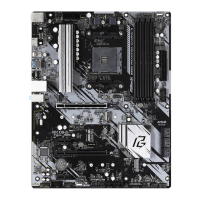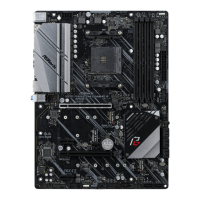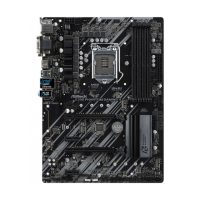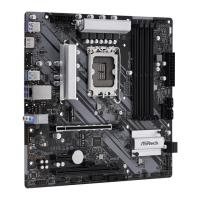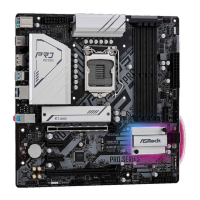Do you have a question about the ASROCK B365 PHANTOM GAMING 4 and is the answer not in the manual?
Details the technical specifications and features of the motherboard.
Step-by-step instructions for correctly installing the CPU.
Guide for mounting the CPU cooler assembly.
Instructions for inserting RAM modules into the DIMM slots.
Steps to install an M.2 WiFi or Bluetooth module.
Guide to installing M.2 SSD modules into specific slots.
Explains how to access and navigate the UEFI setup utility.
Settings and options for system overclocking.
Detailed settings related to the CPU.
Configuration options for the motherboard chipset.
Settings for SATA and M.2 storage devices.
Monitoring system hardware status like temperature and fan speed.
Settings for system security, including passwords and Secure Boot.
Configuration of boot settings, device priority, and boot options.
Details the technical specifications and features of the motherboard.
Step-by-step instructions for correctly installing the CPU.
Guide for mounting the CPU cooler assembly.
Instructions for inserting RAM modules into the DIMM slots.
Steps to install an M.2 WiFi or Bluetooth module.
Guide to installing M.2 SSD modules into specific slots.
Explains how to access and navigate the UEFI setup utility.
Settings and options for system overclocking.
Detailed settings related to the CPU.
Configuration options for the motherboard chipset.
Settings for SATA and M.2 storage devices.
Monitoring system hardware status like temperature and fan speed.
Settings for system security, including passwords and Secure Boot.
Configuration of boot settings, device priority, and boot options.
| Processor socket | LGA 1151 (Socket H4) |
|---|---|
| Processor manufacturer | Intel |
| Compatible processor series | - |
| Maximum internal memory supported by processor | 128 GB |
| Audio chip | Realtek ALC1200 |
| Cooling type | Passive |
| Component for | PC |
| Motherboard chipset | Intel B365 |
| Audio output channels | 7.1 channels |
| Motherboard form factor | ATX |
| Windows operating systems supported | Windows 10 x64 |
| Non-ECC | Yes |
| Memory channels | Dual-channel |
| Memory slots type | DIMM |
| Number of memory slots | 4 |
| Supported memory types | DDR4-SDRAM |
| Maximum internal memory | 64 GB |
| Supported memory clock speeds | 2133, 2400, 2666 MHz |
| RAID levels | 0, 1, 5, 10 |
| Supported storage drive types | SSD |
| Supported storage drive interfaces | Ultra M.2 |
| PCI Express x1 (Gen 3.x) slots | 2 |
| DirectX version | 12.0 |
| Parallel processing technology support | Quad-GPU CrossFireX |
| Number of SATA III connectors | 6 |
| USB 3.2 Gen 1 (3.1 Gen 1) connectors | 1 |
| USB 3.2 Gen 2 (3.1 Gen 2) connectors | 0 |
| BIOS type | UEFI AMI |
| ACPI version | 6.0 |
| BIOS memory size | 128 Mbit |
| System Management BIOS (SMBIOS) version | 2.7 |
| DisplayPort version | 1.2 |
| USB 2.0 ports quantity | USB 2.0 ports have a data transmission speed of 480 Mbps, and are backwards compatible with USB 1.1 ports. You can connect all kinds of peripheral devices to them. |
| LAN controller | Intel® I219-V |
| Ethernet interface type | Gigabit Ethernet |
| Cables included | SATA |
| Depth | 305 mm |
|---|---|
| Width | 244 mm |
